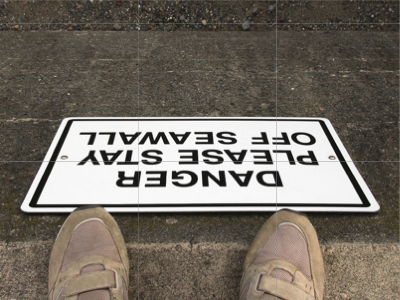Freedom from Reactance
By Peter LloydWhen people walk, they swing their arms. So if any social organization imposed a law against arm swinging, some people would certainly defy it. I know I would. And I would be appalled at anyone obeying such a ridiculous law.
In this exaggerated example, it’s easy to recognize the absurdity of such a law and to understand anyone’s rejection of it. But something else is at play, namely, a natural reaction against being told what to do. In this case, the rejection of the law would be amplified by its absurdity and the fact that restricting arm swinging would feel unnatural and uncomfortable. Still there’s even more going on.
 The human urge to break rules is so strong that people also tend to reject beneficial rules and regulations. This urge stems from from a bias or motivational response identified as reactance.
The human urge to break rules is so strong that people also tend to reject beneficial rules and regulations. This urge stems from from a bias or motivational response identified as reactance.You may have noticed your own reactance the last time you rejected a rewards card at a retail store checkout. Your rejection of the card might consist of reactance and reason. Perhaps you already have too many credit cards and rewards cards and don’t want any more, even though you might save money with the one just offered. But reason may be only the conscious justification of an unconscious rejection. You may not consciously perceive the bias that urges you to resist what you unconsciously judge as an attempt by the store to limit your range of choices or constrain your freedom.
At least that’s the theory behind reactance. And it may help explain the initial rejection of new ideas and rules that can only be judged rationally as beneficial. Antibiotics, helmets for cyclists, lightning rods, dress codes, fluoridation, recycling, seat belts, flossing, and constructive criticism.
Break Smart
Creative people are especially suspicious of rules. We are keenly aware that many rules are arbitrary and just plain stupid. And when broken, they often give birth to brilliant solutions. I like to remind myself that rules and laws are not written unless their legislators can reasonably expect people to break them. Why write a law no one will ever break? Therefore, rules really are made to be broken.
When you break a rule, you’re simply fulfilling the purpose of the rule. But as an unconscious act, reactance restrains your freedom to engage in reasonable and creative defiance. Reactance drives closed-mindedness. The challenge becomes to regulate (there’s that law word again!) your reactions, which calls for critical thinking—thinking unafraid to challenge any rule, law, idea, or sacred cow. At the same time, your critical thinking must remain immune to reactance.
In short, as a creative thinker, continue to break the rules. Just don’t let the rules break you.
Peter Lloyd is co-creator with Stephen Grossman of Animal Crackers, the breakthrough problem-solving tool designed to crack your toughest problems.
Right Brain Workouts Explained
